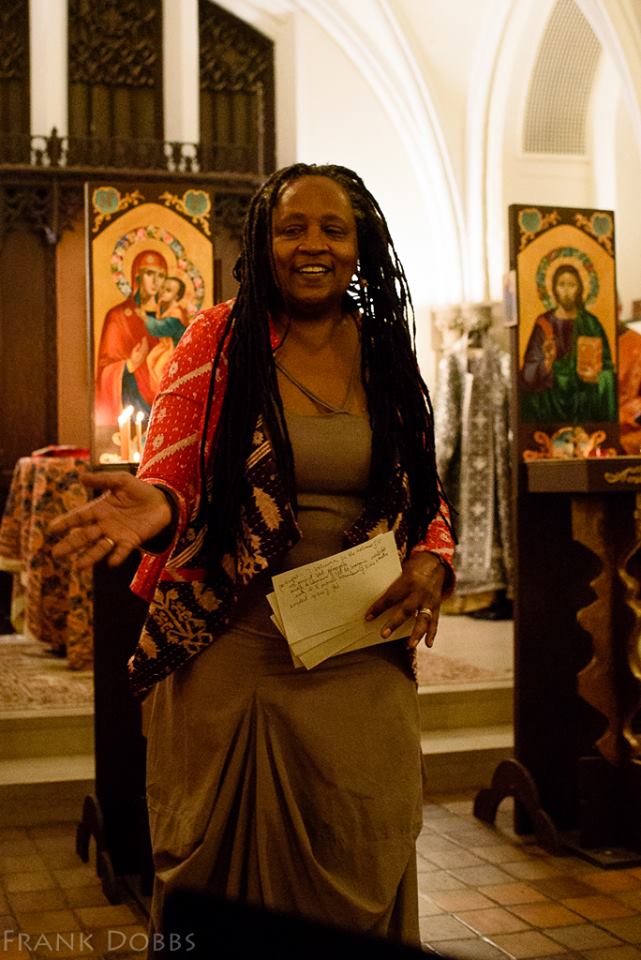“It is finished”. John 19:30
The word “finished” here is translated from the Greek word telos which means accomplished, mission or goal achieved. After the Fall God sent us the Law, the Prophets and the inspired thing words of Scripture. Then he sent us his Son who brought us the good news, taught us how to live, and went on to destroy death.
The earthly deeds have been done: teaching, healing, eating together with the rich and the poor, the powerful and powerless, traveling through communities of Jews, Samaritans and Gentiles with words and actions of love, mercy and justice, standing in God’s truth and justice until the powers of Empire and its agents sent him to his death.
Now we see him on the Cross. He knew he would die. He knew that we would see the confrontation of the Good - his words and teachings - and Evil - the powers and principalities that oppress people and have inflicted this brutal execution on an innocent man.
But we don’t see what comes next. Jesus told us what would happen but at this moment, in these hours on the Cross, the triumph of God is not apparent. At this moment the witnesses saw death.
Let us stay here for a while. How do we hear, “It is finished?” Jesus’s earthly life is done but what about the mission? The world looked very much the same after Jesus died. To this day there are poor and oppressed people all over the world. The very rich and powerful use up much more of the world’s resources than their fair share would allow. We are still subject to natural disasters and pandemics made worse by human activities.
Reflecting on the words “It is finished” causes us to face our own goals and missions. What have we set out to do with the gifts God gave us? How far along the path are we to becoming good people, prayerful and considerate, working on our skills and helping those around us? When will we know when and if it is finished for us?
In her novel Gilead, Marilynne Robinson brings us the inner thoughts of John Ames, an elderly preacher, son and grandson of preachers, who is at the end of his life and considering these very questions for himself. He is amazed at how much he is learning even now, at such an advanced age. He looks back at the people he’s known and the things he’s done . He sees many things in a new light. His house is filled with files of his sermons, at least a thousand he estimates, and wonders if he dares to read them now. He reads one from long ago about the Prodigal Son:
"... grace is the great gift. So to be forgiven is only half the gift. The other half is that we also can forgive, restore, and liberate, and therefore we can feel the will of God enacted through us, which is the great restoration of ourselves to ourselves."
He says to himself in the present, “That still seems right to me “
And yet several weeks later as Ames presides over the funeral of a little girl whose father abandoned her to die in poverty and neglect, Ames recalls how his own beloved son died years ago of a then-incurable disease. He writes:
“That one man should lose his child and the next man should just squander his fatherhood as if it were nothing—well, that does not mean that the second man has transgressed against the first.”
“I don’t forgive him,” he adds. “I wouldn’t know where to begin.”
Maybe we always have more to learn. Maybe a whole life devoted to prayer and service is not enough for us to complete our own spiritual mission. In the world we do what we can, alone and in community, and when we die we pass the baton to those whom we’ve taught and who follow the Word. Hearing these words from Jesus, “It is finished, “ is a challenge to us in two ways. One is for is to follow his example of prayer and dedication to a life of purpose and meaning for ourselves and in the world; a life that addresses the forces on earth that trouble humanity and threaten Creation. The second is to hold on to the faith that Jesus’s work did continue after his earthly death. He taught us that he did in post-Resurrection appearances to his disciples and others. And the apostle Paul taught us in his words to his churches , 1 Corinthians 15:20-23 , words that we sing with great jubilation at the Paschal Feast.
“Christ is risen from the dead, trampling down death by death And to those within the tombs bestowing life.”
Paul wrote this and taught this so we know what it we’re seeing. We see pain and death and we are taught to see triumph as well. Jesus knew, and now we know, what was finished. We no longer need to fear death.
The illustration shows the earliest known crucifixion in an illuminated manuscript, from the Syriac Rabbula Gospels, AD 586: note the Sun and Moon in the sky.
Judith Scott is an Axia board member and frequent blogger.



